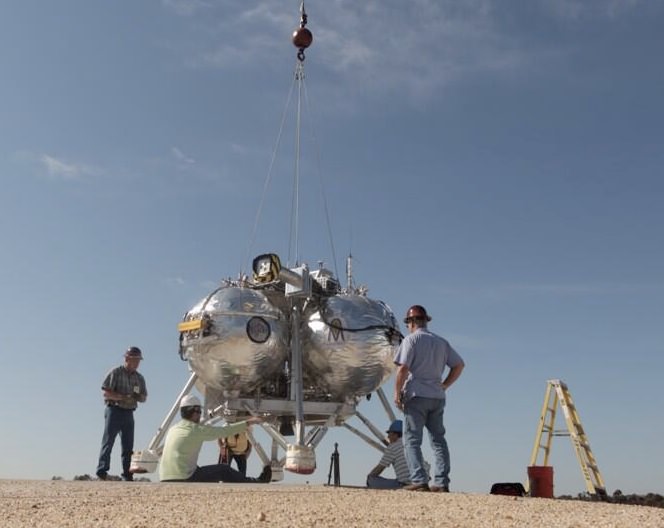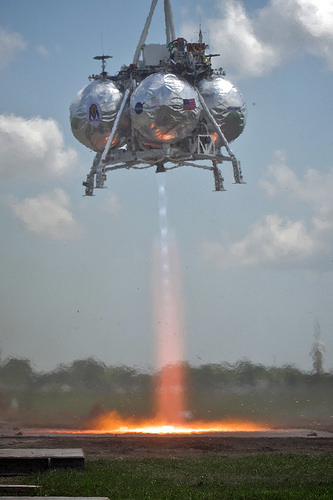)
NASA’s Project Morpheus nailed it again today with yet another successful free flight of their prototype lander, soaring higher, faster, and farther than ever before! Go Morpheus!
The FF9 test, which occurred at 3:41 p.m. EDT at Kennedy Space Center, saw the 2,300-lb (1000-kg) Morpheus craft rise to a height of 580 feet (177 meters) and travel 837 feet (255 m) downrange at 30 mph (48 km/h). After the 85-second flight the craft set down almost exactly on target — only about a foot (.3 m) off.
During today’s test flight the oxygen-and-methane-propelled Morpheus could have cleared the Washington Monument.
The next step is to integrate the Autonomous Landing and Hazard Avoidance Technology (ALHAT) sensors, which allow the craft to identify dangerous terrain and determine the best route to a safe landing — all by itself. This capability will be invaluable for future landings on unexplored surfaces on the Moon and Mars.
“It’s never been done,” said Dr. Jon Olansen, project manager of the Morpheus Project, in 2012. “We’ve never landed of the moon or Mars with real-time hazard detection and avoidance. Most of the Mars missions use air bags. They go where they go, they roll them and they stop… whatever comes, comes.”
Check out the latest incredible free flight video above, and learn more about Project Morpheus here.
Source: NASA
UPDATE: Here’s the “official” NASA video of FF9, showing some fantastic camera views from the craft itself:
)


